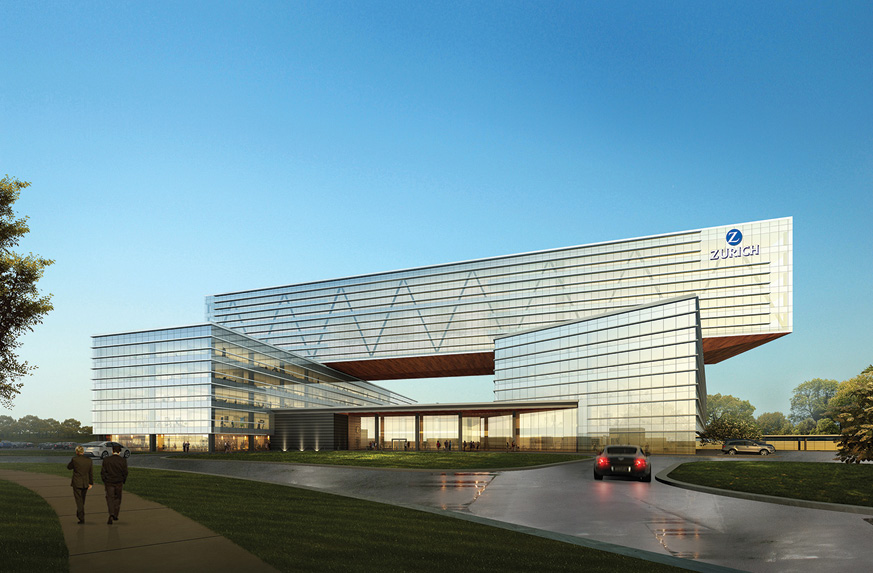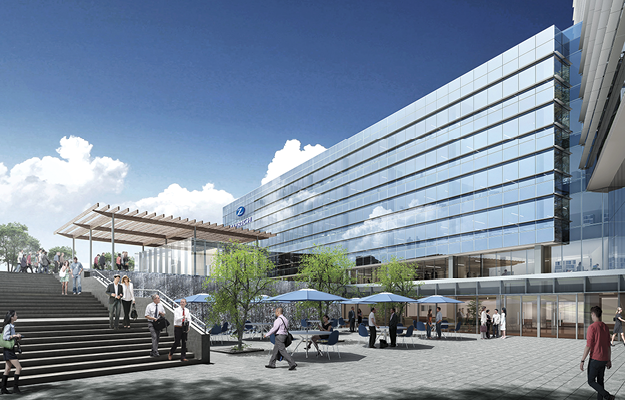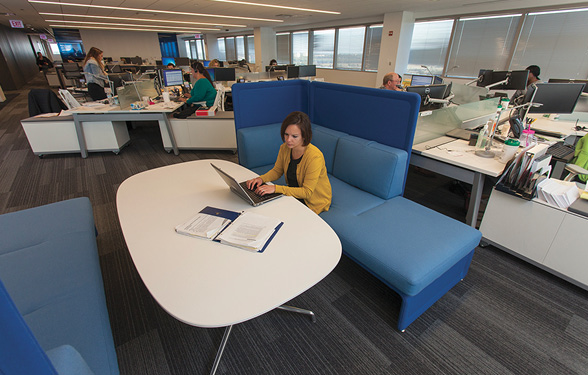- Home
- Media Kit
- Current Issue
- Past Issues
- Ad Specs-Submission
- Ad Print Settings
- Reprints (PDF)
- Photo Specifications (PDF)
- Contact Us

![]()
ONLINE

High Performance Culture
Editors’ Note
Jennifer Kyung also leads the High Performance Culture initiative for Zurich in North America. She was the leader of Zurich North America’s Women’s Innovation Network (WIN) from 2010 through 2014. She was also one of the founding members of Zurich’s WIN in North America in 2008. Kyung joined Zurich in 2003 in Product Underwriting, and her roles have included Director of Product Management Programs, Head of Underwriting and Claims Quality & Training, and Head of the Underwriting Support field organization in Operations. Prior to joining Zurich, she was a Senior Manager with Accenture. She holds a bachelor’s degree in Economics from Northwestern University.
Company Brief
In 1912, Zurich entered the U.S. market. Zurich North America (zurichna.com) is the fourth-largest commercial property and casualty insurance provider, serving the global corporate, large corporate, middle market, specialties, and programs sectors. Zurich helps businesses understand and protect themselves from risk in a rapidly changing, interconnected world.
Zurich is moving to its new headquarters in late 2016. Where does the project stand today and how have you engaged your employees in the process?
We are less than one year away from moving into the new headquarters. We are moving about a mile down the road. The construction project is well underway, the outer shell is nearly complete and soon we will be turning to the interior construction work.

Rendering of Zurich North America’s new headquarters
in the northwest suburbs of Chicago.
We have nearly completed the interior design and we are now undertaking the technology design, and launching our change management efforts.
We engaged our employees from the very beginning of the project starting in early 2013 when I took my role as business lead for the new headquarters. My role is to represent the employees at Zurich as well as our leadership team, to ensure that business needs are being met. We want our people to be able to come to work every day and be at their very best at our new headquarters to really drive results.
We thought it was important to engage our employees in joining work streams and being part of the design, from the exterior of the building to the interior.
From the beginning, we launched a series of different activities. We’re a data driven organization, so we took a data approach to this effort by starting with employee surveys that asked a variety of questions about the workspace, technology, and services at the current headquarters.
We also undertook a series of observational studies where we watched how our employees were using their current spaces and technology. We even engaged our employees in a number of focus groups across a variety of demographics, departments, and roles within the organization to hear directly from them what they were excited about, what improvements they would want to see, and how they work.
We also created business work streams. These were groups of employees who volunteered to be part of the effort from the beginning to help shape the design in a number of different areas including work settings, food services, wellness, and outdoor activities – areas they’re really passionate about.
Employees offered to sit with us and go through different ideas. A number of them brainstormed their own ideas, which we recorded and researched. We then came back together as a group and exchanged ideas, which we shared with the work streams and focus groups. We combined all of this information with the survey results, and brought it together as crowd-sourced feedback into the design process.
From 2013 through the middle of 2015, we were really focused on this crowd-sourcing of the design and using that as input to shape decisions. Our steering committee, which consists of most of our C-suite leadership team, receives this information and meets on a monthly basis. They are very engaged in shaping decisions and providing input on the design to make sure our employees can be at their best.
As you’ve gone through this process, what have you discovered about how critical workspace can be to a company’s performance?
We applied our data-driven tendencies to how we analyzed workspace and performance. All of our other projects at Zurich are based on data points, facts, and analysis, so we applied that to this space. It’s in our DNA. What we didn’t know is that isn’t the norm in the industry to do so, but it still made a lot of sense for us. We started with the survey and the data we were gathering there.
We hired an interior architecture firm that has a workplace strategy group focused on change management and data. We worked on a methodology to apply that survey and focus group data, but also decided to apply it in a pilot project, which was key. We created hypotheses coming out of these surveys and observational studies, and then tested them. We had 150 employees rotate across four different work environments over a three-month period. We compiled results from each of those distinct “neighborhoods” and made decisions based on that data.
Conducting a workplace pilot is an investment, but we felt it was worth it because we believed if we put the time in up front to listen to our employees, we would make smarter, long-term investments.
Through the headquarters pilot program, we identified areas of the workplace that people use extensively and that received high responses in terms of helping their productivity and sense of well-being. There were other areas they didn’t use, and we could make smart decisions and not include those in the design.

Zurich kept its employee’s health and wellness in mind
throughout the design process. Providing abundant daylight and
work-friendly outdoor space will help engage
employees and give them the best possible work environment.
Based on your studies, do you feel the office is as vital as ever and a key to performance?
Absolutely. Our studies proved that employees favored the new design and it helped their team performance and interaction. The design directly reflects our employees’ feedback, so we think people will want to come into the office to experience the environment and to work with each other.
One exciting element of the design is flexibility. Within the office, employees will have many different work settings to select from based on the work they are performing. These work settings, supported by technology, will support employees in being their best. We also know that flexibility outside the office is important for work/life integration and offer flexible working options to our employees.
How do you define success for the High Performance Culture initiative that you lead?
Zurich North America has been headquartered in the Chicago area for over 100 years, and we’ve become a stable and strong company, very warm and welcoming. We really care about our people and our communities.
Our ambition is to be the best global insurer. To achieve a high performance culture, our people have to be at their best every day. Our high performance culture’s success is measured by whether we are effective in supporting our employees in every way possible. I listen to our employees and identify areas where we can continuously improve.
Success is when our employees say that we have a strong culture that supports them in being their best.
As a woman leader, would you talk about how important it is to have a diverse workforce today, and about the opportunities Zurich provides?
Diversity and inclusion is critical, and at Zurich, we make it a priority. We want our people to be at their best, and to be the best we need to have a diverse organization. To get the best people, we have to look at all people in order to get the best talent through the door. Whether gaining top applicants is incentivized through our new headquarters or high-performance culture, we want to attract the most skilled workers and be completely open to everyone. We want the best of the best.
Inclusiveness is making sure we’re listening to all the different voices to come up with the best possible solutions at Zurich. It’s one thing to have a diverse workforce and have the right folks be part of the environment, but we also have to make sure that we are listening to all of those voices and incorporating those thoughts into our plans.
I’ve been here 12 years, and as a leader, I’ve seen that there has never been a shortage of opportunities. There has always been something new around the corner.
If someone would have asked me a decade earlier if I expected I would be leading the headquarters project, I would have said no. It was such an exciting opportunity that was presented to me, and I could not have planned for it. Every time one looks around the corner here, there is a new opportunity. Do I have a traditional background for a role like this? Probably not. I have a consulting and project leadership background, which are great foundational pieces, but I don’t have a real estate background or an architecture background.

Marlene Steinmayr was one of 150 Zurich employees who took
part in a workplace pilot project to test and provide feedback on
dynamic working environments that were being considered for inclusion
in Zurich’s new North American headquarters.
However, Zurich looks at foundational capabilities and determines that if someone is great at leading, at change, and at motivating people, they can take that person and have them lead and motivate others in a different subject area.
This is why it’s great working at Zurich and in this particular role. Zurich is a company that looks at skills and determines how they can be transferable, and how they can help talented people move into other roles to help the organization more broadly. I feel my voice has been heard and my ideas have been included. The way I want to lead the efforts I’m leading has been respected, and that has allowed me to lead and shape these initiatives. This truly has been a great place to work.
Describe how your Women’s Innovation Network (WIN) has played a role in diversity and inclusion at Zurich.
WIN is a great organization. I was fortunate enough to be one of the founding members of our Women’s Innovation Network in 2008. It started as a grassroots effort, and over the years we formalized it. We’re up to 1,800 members now.
It has been a great story of bringing women, and also men, into the conversation about networking, professional development, and leadership opportunities for women at Zurich and in the insurance industry. It has been rewarding and fun to see that organization grow. For me personally, I enjoy being able to mentor so many professional women coming into the workforce. We are able to show that we can help each other out, and help advocate for other women coming into the insurance industry. At Zurich, we help them navigate the organization and the industry, and assist them in finding new opportunities and roles.
For you, when you’re leading high-performance culture, there is no end to that, and while the new building will have a grand opening, it’s a long process with many wins along the way. In both areas, are there moments you can briefly reflect on and enjoy the wins?
I’m a big proponent of having fun at work and celebrating team successes. We do take time out. The high-performance culture team is new but we are starting to enjoy success there, as well as with the headquarters team.
We like to get together, take a look back, and reflect. For the headquarters, the milestones are very clear and it’s great to see a tangible result as the physical structure goes up. It’s quite exciting to see the time-lapse video. We had our topping out ceremony for the headquarters in August where we raised the highest beam into place. Our employees had actually signed the beam, so there is a physical representation of everybody being involved. It’s great to have our employees be part of a video and that excitement.
It’s been a terrific experience to play a key role in the construction of a new world-class building. I’m glad we’ve recognized the milestones and taken the time to celebrate with the team. It’s a project that’s unlike any other.•